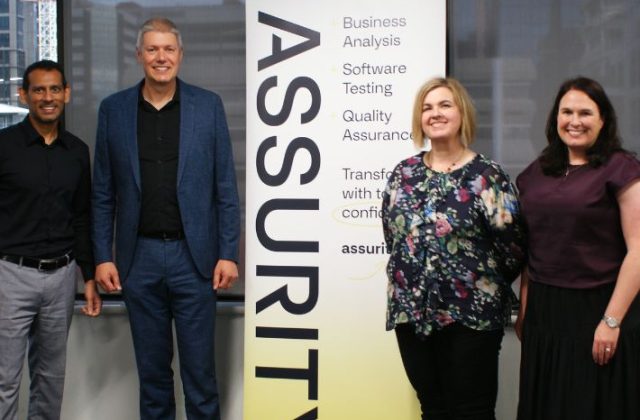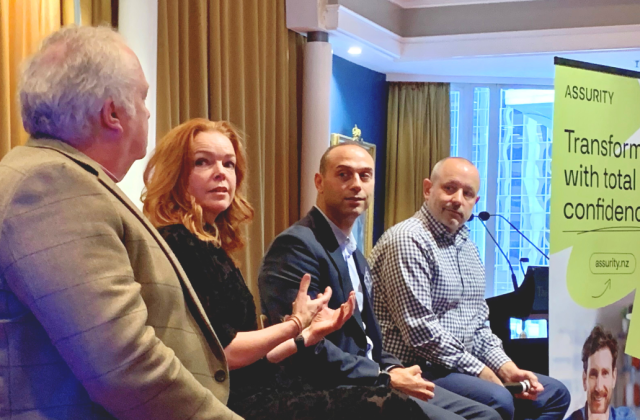Date: 25 July 2018
We live in a world where the pace of change is faster than before. Industries and organisations must evolve or die. The average tenure of a company on the S&P 500 has gone from 33 years in 1965 to an estimated 15 years today. Roughly half of the companies on the index will be replaced in the next 10 years.
Technology has reduced barriers to entry, enabling new challengers to come and take on the established order and win. Almost every industry you can think of is being disrupted – from taxis and trucking to retail, insurance and finance – and, in order to thrive, not only do you need to keep pace, but you need to out-innovate (including speed, value and quality) the competition.
With that as our context, it’s clear that fundamental change is required if organisations are to survive. The existing DNA of legacy organisations promote and support all the old ways of working – the use of annual planning, hierarchical, siloed organisational structures, traditional project management techniques and heavyweight governance, and traditional delivery processes and technologies. These won’t work in this new world.
New ways of working – simply a means to an end
Yet change is hard and disruptive and many of us placate ourselves with the old tale ‘if it ain’t broke, don’t fix it’. If we’ve been successful in the old ways, why would we need to change? Surely ‘Agile’, ‘DevOps’ and ‘Business Agility’ are just buzzwords that we don’t need to worry about?
I actually believe this is half true. Agile, DevOps and Business Agility are all just means to an end – trying to help enable us to focus on the right work and quality and being able to deliver that in a timely fashion, regardless of our organisational structure. If we can’t actually quantify the value of change, why would anyone want to try these new ways of working?
Lots of people want to sell you a transformation roadmap, implying if this is your starting point and you follow these directions, this is where you will end up. Real life isn’t that easy. There is no such thing as a big transformation!
Take small steps. Again and again
What we need to do is make small improvements constantly. There should be no end to our evolution – we always need to keep learning and improving. This is what we (generally) do as a species and this is what we need to do in our organisations. A wise friend once told me ‘we have two choices when it comes to work – we can either change our company or we can change our company’.
In my own experience, there are many reasons that finally push organisations over the line to start evolving and I’d like to talk about some of those here.
Are you building what your business wants or what your customer needs?
Many organisations I work with have nice shiny plans pulled together through numerous sessions with key stakeholders from ‘the business’. These plans sound great until you start asking a few questions, for example: ‘What are the biggest problems facing your customers?’, ‘What problem is this trying to solve?’, ‘How have you validated this with your customers?’, ‘Is the proposed solution something that will actually work in their context?’.
Once you ask these kind of questions, you quickly understand that the proposed backlog of work is frequently what the business wants, not what the customers needs. Unsurprisingly, when this work is delivered to market, the response is generally underwhelming.
Sadly though, most organisations struggle to quantify the value of work delivered (I wonder why that is important…) and so they keep just doing more of the same, taking what I refer to as the ‘scattergun’ approach. If you have enough bullets in the air, surely something is going to hit eventually.
There are a variety of techniques that can be applied to start focusing on real customer/user need (beyond the scope of this blog post). But think about the questions above, think about user research and validation. Talking to a real user isn’t that hard, but the insights can be quite profound.
Are conflicting priorities creating bottlenecks?
You may or may not be surprised to hear this, but the vast majority of organisations I’ve worked with have lacked an absolute ordered list of priorities for work they want to deliver. That is to say, each area of the business has had their own unique view of what was most important to the organisation, but there was no overall view of what mattered.
This becomes a problem as most organisations have numerous bottlenecks that work needs to go through in order to be delivered. Regardless of whether it’s finance, governance, analysis, development, testing, operations, HR or any other area of the business, a bottleneck is a bottleneck.
If there isn’t a clear priority, people will naturally focus on what matters to them at the time – possibly influenced by the loudest voice or highest-paid opinion – or they may just try and do everything at once, juggling many pieces of work at the same time. What this leads to is slower delivery of all work as we are essentially creating traffic jams on the roads and highways of our organisations.
Sticking with this metaphor is quite helpful as the techniques for traffic are how we work with our clients as well. If we are stuck in a traffic jam, the first step is to zoom out and see what is causing it (visualise). If we can get up above the traffic, we can see where the bottlenecks are and work to resolve those.
One obvious way to speed up traffic is to limit the number of cars on the road (also known as work in progress). By measuring the flow of traffic in different areas, we can then see what changes have an impact to the flow of traffic. By making the policies explicit we can ensure people drive to the same standards. We can introduce feedback loops to make sure we understand the data we are gathering. And we can collaboratively evolve to keep improving our system.
Are you fighting to retain and attract talent?
Given many organisations have a culture that could be described as ‘stuck in the mud’, it’s hardly surprising that many of the best people choose to move on. Top talent wants a compelling purpose to work towards, the autonomy to get great work done and a path to mastery that gives them the feeling of improvement and learning every day.
If they are doing work that delivers little value, if they are being forced to work through wasteful or time-consuming processes that don’t add value, if their opinions aren’t treated with respect or they don’t feel like they are growing, naturally they will move on. Furthermore, word spreads quick as to the quality of an organisation – not only will top talent leave, top talent will question whether your organisation is somewhere that they would like to be.
Changing the DNA of your organisation is not an overnight thing; it involves changing established mindsets, habits and beliefs inside of your organisation and developing collectively upheld new habits to replace old ones. This can only be done one habit at a time. Our approach is to change habits across the whole organisation – including people, process, strategy, structure and leadership in order to support sustainable change.
Are you slow to deliver?
Are you as responsive as you think you need to be? Are you frustrated by the length of time it takes to meet your customer needs? Many organisations take a minimum of many months to go from idea to delivery to the customer – during which the customer need may well change or be fulfilled by a competitor. Given that delivery is slow, this generally means a lot of manual processes in the way of delivery, therefore the cost of delivery is high. Furthermore, if you deliver work infrequently, then all of the processes around delivery tend to be more frail than desired. Slow delivery means cramming as much as possible into each release of work, making the work more brittle and prone to failure. Long story short, slow delivery is a sign of many different problems.
Given the complexity, there isn’t one simple solution to this problem. However, start by figuring out how work is currently delivered, identify the bottlenecks and processes in the way of faster work delivery. It may mean breaking work into smaller chunks, increasing automation in the systems that support delivery, getting better cross-department support to enable faster delivery, forming teams that support delivery or a million other things. The old DevOps mantra rings true here – do something till it hurts and then improve it.
Do you have too much governance?
Governance is important in any organisation. You want to make sure you are getting best bang for your buck, regardless of what you are delivering, but many times heavyweight governance leads to heavyweight work delivery. If the process is hard, then people will naturally cram everything they can into plans and delivery. I’ve seen places that required large-scale reporting and multiple governance boards for work that was only going to cost a few thousand dollars and be delivered in weeks – the same level of governance that was required for work that was costing tens of millions of dollars and taking years. Given the people that are part of governance processes tend to be time-poor individuals to begin with, heavyweight processes simply become slow, time-consuming organisational molasses.
I often talk about just enough governance. This varies from context to context, so the key is figuring out what information you need in order to make the right decisions at the right time. Furthermore, what are the decisions you need to make, versus the decisions that can be delegated? David Marquet talks about above andabove and below the waterline decisions below the waterline decisions, that is to say, would the decision (if wrong) sink your organisation? If not, then it’s probably a viable candidate to be delegated.
Much of governance tends to be inspecting reports of what’s being delivered, rather than inspecting real work. Is it possible to get closer to what’s being delivered so you can provide feedback on something of value? Much of the reporting that is required can be automated through simple task management tools ensuring real-time reporting is available at whatever level of detail you need, whenever you need it. What does minimum viable governance look like in your organisation?
So now what?
These are just a few of the challenges I’ve run into working with clients in New Zealand and abroad. There are many more that I will address in a future post. My goal is to get you thinking and to understand your organisation’s existing DNA – its mindset, habits and culture. Then imagine how you can learn and improve.
What are your greatest weaknesses and what is our plan to address them? How do you do better today than you did yesterday? Human capital is our most precious resource and our time on this planet is finite. How do we make sure we are doing something meaningful, impactful, worthwhile on a daily basis? That is a question I will leave for you.












